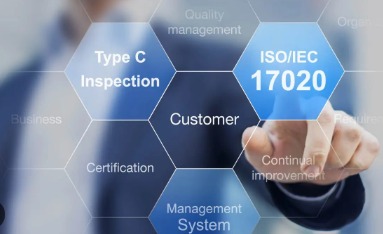In the modern business environment, where efficiency, reliability, and sustainability are key to success, managing assets effectively has never been more important. Every organization depends on assets — whether they are physical (machinery, buildings, infrastructure), financial (investments), digital (software, data), or intangible (intellectual property, brand value). Proper management of these assets ensures operational efficiency, cost optimization, and long-term business growth.
To help organizations establish a systematic and effective asset management approach, the International Organization for Standardization (ISO) introduced ISO 55001:2014 – Asset Management Systems. This standard provides a globally recognized framework for managing assets throughout their entire lifecycle, ensuring they deliver maximum value while minimizing costs and risks.
What is ISO 55001:2014?
ISO 55001:2014 is an international standard that specifies the requirements for an Asset Management System (AMS). It guides organizations in establishing policies, processes, and strategies that ensure assets are managed efficiently and contribute to achieving business objectives.
The standard applies to all types of organizations — whether public or private, large or small — and covers all kinds of assets, from infrastructure and machinery to IT systems and intellectual property.
ISO 55001 is part of the ISO 55000 series, which includes:
-
ISO 55000: Overview, principles, and terminology of asset management.
-
ISO 55001: Requirements for establishing and maintaining an Asset Management System.
-
ISO 55002: Guidelines for implementing and improving an AMS.
Objectives of ISO 55001
The key goal of ISO 55001 is to help organizations manage assets strategically and sustainably. Its objectives include:
-
Maximizing Asset Value: Ensuring that each asset contributes optimally to business goals.
-
Reducing Costs and Risks: Minimizing operational inefficiencies, maintenance costs, and unplanned downtime.
-
Enhancing Decision-Making: Providing data-driven insights to make informed asset investment and replacement decisions.
-
Ensuring Compliance: Meeting legal, regulatory, and safety standards related to asset operations.
-
Supporting Sustainability: Reducing waste, resource use, and environmental impact through efficient asset utilization.
-
Driving Continuous Improvement: Encouraging ongoing monitoring and performance enhancement of the AMS.
Key Principles of ISO 55001
The success of ISO 55001 implementation relies on several guiding principles:
1. Lifecycle Approach
The standard emphasizes managing assets across their entire lifecycle — from design and acquisition to operation, maintenance, and disposal — to ensure long-term performance and value creation.
2. Value Optimization
ISO 55001 focuses on aligning asset management activities with organizational objectives to maximize return on investment and stakeholder satisfaction.
3. Risk-Based Thinking
Organizations are encouraged to identify and manage risks that could affect asset performance, availability, or safety.
4. Integration with Business Strategy
Asset management must not function in isolation; it should be integrated into the overall strategic planning and decision-making processes.
5. Continuous Improvement
Regular performance reviews, audits, and stakeholder feedback are essential to drive improvements in asset management practices.
Benefits of ISO 55001 Certification
Implementing ISO 55001 certification brings numerous benefits that impact operational efficiency, financial performance, and organizational reputation.
1. Enhanced Asset Performance
By applying systematic monitoring and maintenance strategies, organizations can extend asset lifespan, minimize failures, and improve reliability.
2. Cost Optimization
Proactive maintenance and lifecycle planning help reduce unnecessary expenditures, unplanned downtime, and repair costs.
3. Improved Risk Management
The standard encourages the identification and mitigation of asset-related risks, reducing the likelihood of failures or accidents.
4. Strategic Decision-Making
ISO 55001 ensures that asset-related data and analytics support smarter, evidence-based investment decisions.
5. Regulatory and Legal Compliance
Organizations can better align with national and international regulations related to safety, environment, and performance.
6. Stakeholder Confidence
Certification demonstrates a strong commitment to transparency, efficiency, and sustainability, earning trust from investors, customers, and regulators.
7. Sustainability and Environmental Responsibility
Efficient asset use reduces resource waste, energy consumption, and carbon emissions — contributing to global sustainability goals.
Steps to Implement ISO 55001
Achieving ISO 55001 certification requires a structured approach that involves management commitment, planning, and continuous improvement.
1. Leadership Commitment
Top management must support the implementation by defining the asset management policy, objectives, and scope.
2. Gap Analysis
Evaluate existing processes against ISO 55001 requirements to identify gaps and improvement areas.
3. Planning and Documentation
Develop an Asset Management System framework that includes roles, responsibilities, asset performance indicators, and risk controls.
4. Implementation
Apply the AMS across all operations, ensuring staff are trained and aligned with new procedures.
5. Monitoring and Evaluation
Regularly track asset performance, analyze data, and ensure objectives are being met effectively.
6. Internal Audit and Certification
Conduct internal audits to verify compliance, followed by an external audit from an accredited certification body.
Who Can Benefit from ISO 55001?
ISO 55001 is applicable to a wide range of organizations, including:
-
Manufacturing and Industrial Companies – to improve machinery reliability and reduce downtime.
-
Utility Providers (Water, Power, Gas) – to manage critical infrastructure efficiently.
-
Transport and Logistics Organizations – to ensure safety and optimal vehicle or equipment performance.
-
Public Sector and Government Bodies – to ensure sustainable infrastructure management.
-
IT and Data Centers – to manage digital assets and technology investments effectively.
Conclusion
In today’s competitive world, effective asset management is no longer a choice — it’s a necessity. ISO 55001:2014 provides a robust framework for organizations to manage their assets strategically, ensuring maximum value creation, risk reduction, and sustainability.
By adopting ISO 55001, organizations demonstrate their commitment to excellence, accountability, and long-term performance improvement. Whether it’s maintaining a production plant, managing a power grid, or overseeing an IT network, ISO 55001 ensures that every asset contributes efficiently to business success.
In essence, ISO 55001 is not just a certification — it’s a strategic advantage that drives operational excellence, strengthens stakeholder confidence, and promotes sustainable growth.







